<< Previous | Displaying results 5151-5175 of 6769 for "" | Next >>
Insignia of the 80th Infantry Division. The nickname of the 80th Infantry Division, the "Blue Ridge" division, reflects the home states of the majority of soldiers who formed the division during World War I: Pennsylvania, West Virginia, and Virginia. The Blue Ridge Mountains run through these three states.
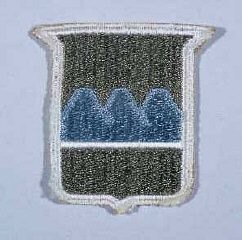
Prisoners at the time of liberation of the Ebensee camp, a subcamp of the Mauthausen concentration camp. This photograph was taken by US Army Signal Corps photographer Arnold E. Samuelson. Austria, May 7, 1945.
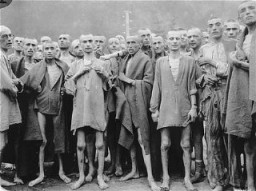
Four emaciated survivors sit outside in the newly liberated Ebensee concentration camp. Photograph taken by Signal Corps photographer J Malan Heslop. Ebensee, Austria, May 8, 1945.
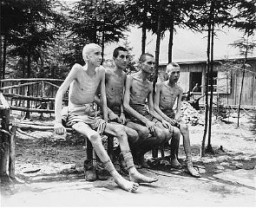
Emaciated survivors in the Ebensee subcamp of the Mauthausen concentration camp suck on sugar cubes provided by US soldiers upon the liberation of the camp. Photograph taken by Signal Corps photographer J Malan Heslop. Ebensee, Austria, May 8, 1945.
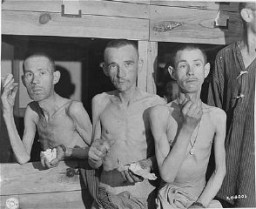
Liberated prisoners at the Ebensee camp. Too weak to eat solid food, they drink a thin soup prepared for them by the US Army. Photograph taken by US Army Signal Corps photographer J Malan Heslop. Austria, May 8, 1945.
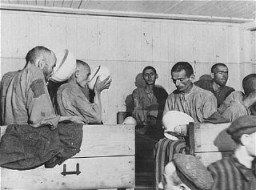
Insignia of the 12th Armored Division. "Hellcats, " the winning entry in a division contest for a nickname held in early in 1943, symbolized the 12th's toughness and readiness for combat.
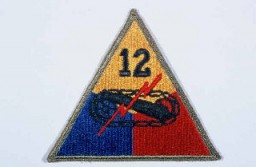
US troops view corpses of prisoners massacred by SS guards in a wooded area near the Kaufering IV subsidiary camp of the Dachau concentration camp. Landsberg- Kaufering, Germany, April 30, 1945.
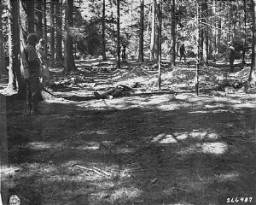
A view of barracks in the Kaufering network of subsidiary camps of the Dachau concentration camp. Landsberg-Kaufering, Germany, after April 27, 1945.

Forced laborers inside barracks soon after the liberation of Kaufering IV, part of a network of Dachau subcamps. Landsberg-Kaufering, Germany, 1945.
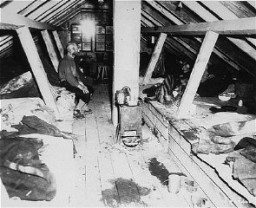
A survivor of Kaufering IV, one of the Dachau subcamps in the Landsberg-Kaufering area, with US soldiers after liberation. Kaufering, Germany, after April 27, 1945.
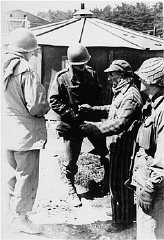
The entrance gate to Kaufering IV subcamp of Dachau. This photograph was taken after liberation. Near Landsberg, Germany, after April 28, 1945.
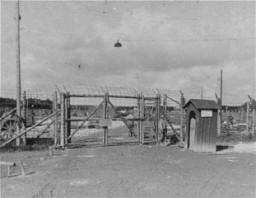
Forced laborers build the south wall of the foundation of the new Dachau satellite camp of Weingut I in Mühldorf . Germany, 1944.
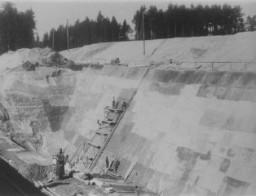
A US soldier stands guard as mayors and citizens of local towns view the corpses of inmates of the Rottleberode subcamp of Dora-Mittelbau, who were killed when the SS locked them in a barn and set it on fire. Gardelegen, Germany, April 18, 1945.
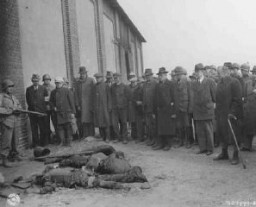
A sign at the military cemetery in Gardelegen in memory of the prisoners who were killed by the SS in a barn near the town. Germany, April 18, 1945.
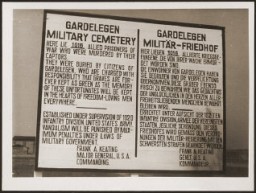
US troops inspect a barn on the outskirts of the town of Gardelegen that was the site of the massacre of over 1,000 concentration camp prisoners. Germany, April 14-18, 1945.

Barn on the outskirts of the town of Gardelegen that was the site of the massacre of over 1,000 concentration camp prisoners. Germany, April 16, 1945.
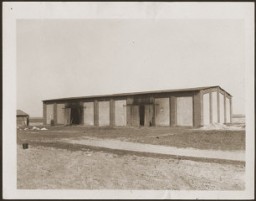
Bonde Gaza, a Hungarian musician who survived the Gardelegen atrocity, demonstrates to American soldiers how he managed to escape from the barn which the SS had set on fire. Germany, April 14–18, 1945.
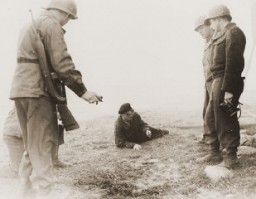
An American soldier kneels by the corpse of a prisoner on the roadside near Gardelegen. The prisoner was shot by the SS when he was too exhausted to continue on a death march. Germany, April 14-18, 1945.
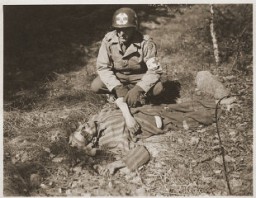
American soldiers look at the exhumed bodies of prisoners who were burned alive in a barn outside Gardelegen. Germany, April 14-18, 1945.
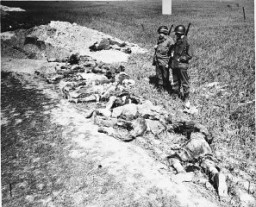
View of the wall surrounding the cemetery of the Hadamar euthanasia killing center. Jagged pieces of glass were placed on the wall to discourage observers. This photograph was taken by an American military photographer soon after the liberation of Hadamar. Germany, April 5, 1945.
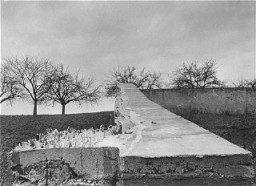
An American soldier stands guard in front of the Hadamar Institute. The photograph was taken by an American military photographer soon after the liberation. Germany, April 5, 1945.
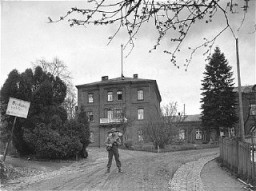
View of the Hadamar Institute. This photograph was taken by an American military photographer soon after the liberation. Germany, April 7, 1945.
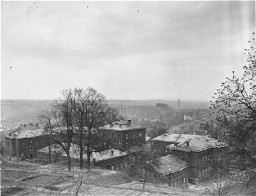
View of one of the mass graves at the Hadamar Institute. This photograph was taken by an American military photographer soon after the liberation. Germany, April 5, 1945.
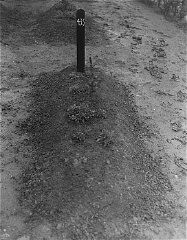
A US Army soldier views the cemetery at Hadamar, where victims of the Nazi euthanasia program were buried in mass graves. This photograph was taken by an American military photographer soon after the liberation. Germany, April 5, 1945.
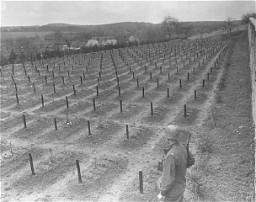
Exterior view of the Hadamar main building. The photograph was taken by an American military photographer soon after the liberation. Germany, April 7, 1945.
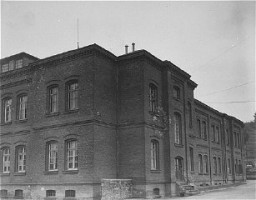
We would like to thank Crown Family Philanthropies, Abe and Ida Cooper Foundation, the Claims Conference, EVZ, and BMF for supporting the ongoing work to create content and resources for the Holocaust Encyclopedia. View the list of donor acknowledgement.